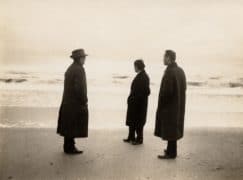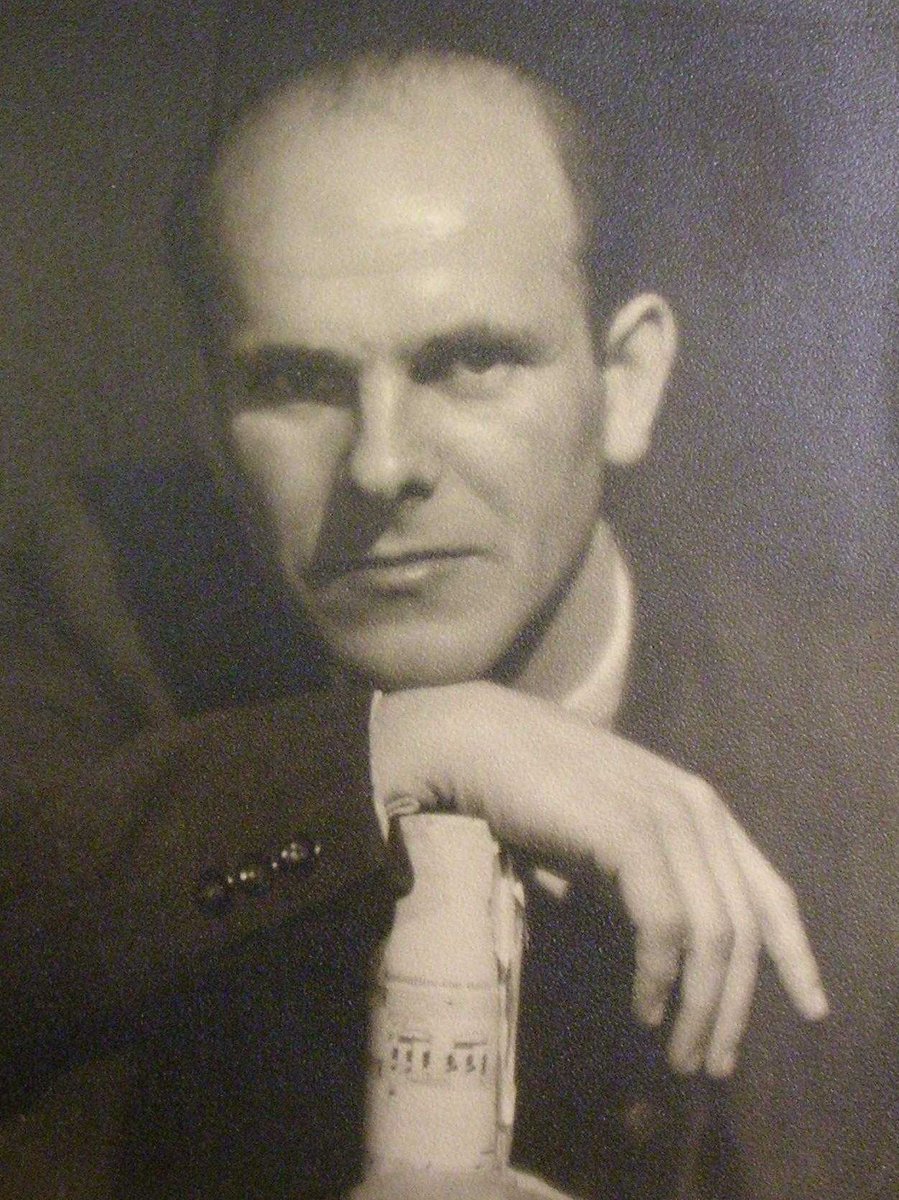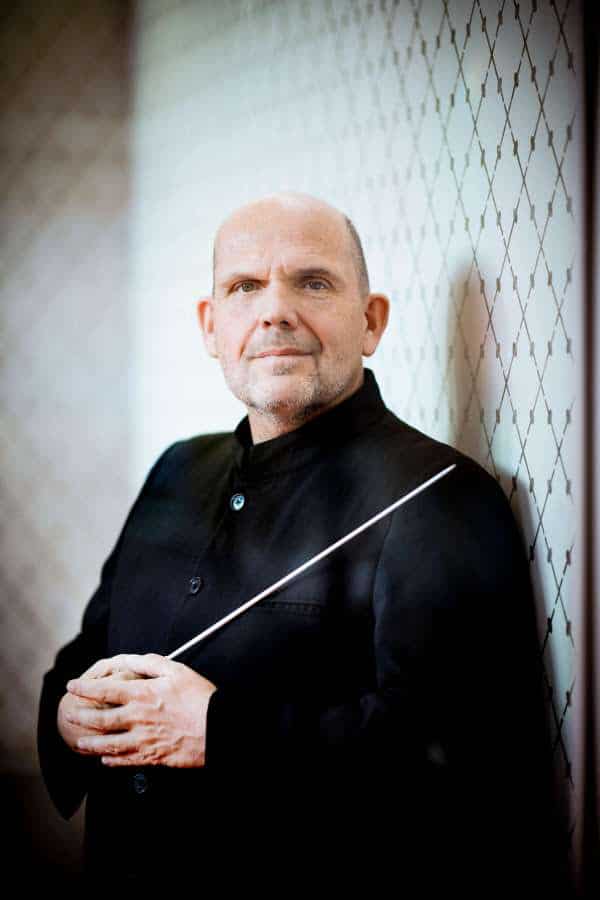Berlin employs atonal music to combat drug use
mainDeutsche Bahn has announced a plan to play atonal music at the Hermannstrasse station in order to deter drug users from congregating there.
No repertoire has yet been chosen.
A newspaper report says atonality ‘completely undermines traditional listening habits.’
Should we offer them a playlist?
Any more favourites?






“Few people find it beautiful — many people perceive it as something to run away from” – demonstrating a correct general understanding from authorities, in a country with the richest classical music life on the planet. But the danger is, of course, that atonal music will attract junkies instead of chase them away, because they may feel vindicated in their state of mind and confirmed in their identity. Also it is possible that modernists who saw their career ending in these eroding times, who got terribly depressed because of the ongoing conservatism of audiences, and therefore landed in the gutter, will flock to the station to have their world view approved of.
A report from Leipzig where classical music (tonal one there if I recall correct) is already played at the entrances of the main station to drive unwanted people away: They indeed left and can now be found in the nearby park – but only to be superseded by a new, even more aggressive clientele.
https://www.drehscheibe-online.de/foren/read.php?002,8654322,8654449#msg-8654449
I like the detail in the Times article that they had to stop playing classical music because too many dealers liked it.
Giacinto Scelsi, Canti del Capricorno. I confess that I have used it with unfriendly intertions and it works.
https://www.youtube.com/watch?v=9IUvp3Q6E10
There’s an irony here; you have to be stoned before you can ‘appreciate’ it. Anyway, I’ve got serious reservations about a country which can find no other way to deal with antisocial behaviour. That’s what I noticed about Germany compared to Austria – one place is safe to live and the other is not. I felt unsafe on lots of occasions in Germany; a couple of times really, really frightened and intimidated.
“… you have to be stoned before you can ‘appreciate’ it.”
Yes, the “Canti del capricorno” can be enjoyable for the listener who gets his or her brain in the same “wavelength” as Mr. Scelsi, and some knowledge of (and taste for) Japanese traditional song helps. On the surface, however, it’s (for my ears) unbearable.
I agree, one of the reasons that Vienna scores high on lists of liveable cities while Berlin does not. There was a hilarious article in the Guardian( where else) telling us how wonderful Lagos was. Several hundred people pointed out the sky-high crime rate and lack of the most basic amenities, and the article was quickly closed for comments. Naturally the writer does not live in Lagos. Reminiscent of the complaints from New York “intellectuals” that the city had become much less cool since pensioners were less likely to be mugged. As Orwell so wisely put it, some things are so stupid that only intellectuals would believe them
You’ve nailed it!! In Vienna the Polizei are willing and able to enforce the law and the people won’t tolerate lack of public safety. “Ah”, you hear people say, “that’s a right wing country”. My response? Is THAT what it takes to get public order?
All in one collection:
https://www.youtube.com/watch?v=LACCAF04wSs
Proving that Boulez heals!
Schoenberg is a good choice as he was based in Berlin for awhile. Webern wasn’t so shouldn’t be featured. With this premis in mind: Chris Newman, Richard Barrett and Elliott Carter make the lsoundtrack
l.h….and for the sake of some equality: Rebecca Saunders.
Atonal music undermines the will to live.
The three videos offer much too tame material. Webern is so modest, in his symmetrical way, that junkies won’t notice, and the other two are not really atonal, they are ‘floatingly tonal’, which may be recognized as being drunk and depressed in the same time, one can imagine junkies saying to each other: yes, that’s how it is – and they will stay for more.
Much better to make use of Olga’s feminism:
https://www.youtube.com/watch?v=FmWslEUpf9s
…. or Georg Friedrich’s post-rehab report which would be an unpleasant memory:
https://www.youtube.com/watch?v=5oa4uCKbj4g
And of course, Helmut’s ghost sounds would make even loaded junkies uncomfortable:
https://www.youtube.com/watch?v=R5hLUU2NrUA
I found German rail stations, particularly in large cities, horrible places to be. Legions of losers from all over the world standing around in menacing groups looking for some ‘action’. I wouldn’t return to Germany.
Great news! Thanks Sue.
And the trains aren’t even punctual any more
Indeed. Semi-privatization has left an ugly stain.
“Legions of losers from all over the world ”
Would it be better if there were only German losers?
You see, sue, this is what happens when you’re a deplorable: your racism, your bigotry and your general stupidity always come up, no matter what you write.
Oh and btw, I find entire neighbourhoods in Trumpkistan way more dangerous than anything you’ll ever see in Germany.
“That’s what I noticed about Germany compared to Austria – one place is safe to live and the other is not.”
Funny, that’s how I feel about Canada and Trumpkistan: one is civilized, the other isn’t.
Insults when people tell the bleeding obvious is what saw Trump elected. But I expect you’re not smart enough to see that and you obviously choose to fall back on Orwellian language. I think your countrymen and women have had a gut full of propaganda from people who have to prop up their own failed ideologies at the expense of everybody else. Sticks and stones.
In my own experience, it was quite remarkable to enter a railway station in a perfectly kept sophisticated train, then walking through an up-to-date clean station building with luxury shops and well-dressed consumers, and to exit the building amidst a small army of entirely derelict humanity, empty bottles, raw screams and predatory looks, all supervised by serious-looking police officers.
Webern’s Quartett op. 22 is not socalled atonal music but dodecaphonic music. A big difference!
It’s atonal dodecaphonic music.
Whether you like it or not, let’s accept some music theory: Socalled atonal music at least by Schoenberg’s inner circle (Schoenberg, Berg, Webern) follows already the idea of “Emanzipation der Dissonanz” but is not yet serial. The idea or serial organisation came many years later as a consequence of limitations they felt while composing “atonal music” and this is what is normally called dodecaphonic music.
If one goes into the theorizing of Schoenberg or his circle of that time, one bumps into lots of indefensible ideas. For instance, the ’emancipation of the dissonance’ sounds nice and radical, but what would that mean? Dissonance is not a thing that can be emancipated, dissonance depends upon stylistic and structural context, it is part of a musical language. The 12-tone system, developed after S’s ‘free atonal period’ from ca. 1909 onwards, was meant to order the tendency to avoid tonal associations, in fact it is pan-chromatic. The idea was that all 12 tones in the chromatic scale should have the same value in the whole, and this meant that dissonance was not emancipated but simply cancelled, which results in a static situation: no tonal structuring = no narrative, no development, everything is static and variation which goes nowhere.
And then, it can be argued that S’s so-called ‘free-atonal period’ is in fact still tonal, since ‘normal’ music is still implied in the background. Much depends upon how one would define ‘tonality’ and in which context.
But what happened to that high frequency drone that kept gangs of teenagers out of shops? Or does the effect wear off so that they’re immune to aural insult after 21.
Evryali by Xenakis.
Anything by Merzbow.
I’m quite fond of Naama by Xenakis, but that’s for personal reasons.
I shall play Merzbow very loudly when I am next kept waiting at an airport.
Be careful, Norman, as airport security authorities might overreact and evacuate all terminals and ground all planes. You’d be really stuck in a big way then. With your terrible sounds… And once it is found that the cause of airport evacuation is (and resulting claims for financial compensation are lodged with) you, you’d wish to have never be born… Oy!
I love Evryali but it needs a really feisty interpretation to come off. Claude Heffler sounds like a midi -playback.
I heard Jonathan Powell play it last year and he got close to the core of this remarkable piece.
The idea is to deter drug abuse….NOT INDUCE SUICIDE!
Boulez’s Piano Sonata No. 2.
Bad choice. The pianistic fireworks-effect of the extreme movements is quite enjoyable when the pianist succeeds. However, Boulez’s first and the third sonatas are hell – these ones would be very effective to “depopulate” an area.
Teeming with invention as one of the YouTube comments says. This piano concerto by Babbitt is like a stretched out version of the 2nd movement of the Webern Variations.
https://m.youtube.com/watch?v=3YMNpgMC-8I
The opposite of MIchael Tilson Thomas’s memorable description of Feldman (“Deluxe Webern”).
Babbitt highlights the spikyness instead.
What does this piece ‘convey’? What does it want to ‘say’? Spikyness as such? Does it want to demonstrate how it feels when a lady in a silk evening dress is locked-up in a narrow cubicle filled with cactusses? And if so, what would be the point of it?
There is no point, you could only bab it.
Pure music doesn’t need a point — what is the point of the second movement of Beethoven’s first symphony, of the sinfonia of Bach’s second keyboard partita, etc. ad infinitum…. At what I would describe as its most basic level (a series of notes that generates aesthetic interest and perhaps intellectual interest), there is a lot of atonal music that works for me. You seem to find impossible to believe that one can have a genuine, positive reaction to atonality.
+100
Not at all, since the evidence is all aound us, including on this website. The point is, that music indeed DOES have a point, and Klangkunst has a quite different point. Music relates to the inborn perceptive system which can pick-up tonal relationships (since they are rooted in physics and mathematics), and these relationships produce emotional effects which carry psychological meaning. Klangkunst functions on the purely acoustical level, which is a materialistic approach: its aesthetics deal with the possible interest of patterns, gestures and colouristic effects, but nothing more: references to tonal relationships are, most of the time, carefully avoided. Nothing wrong with this, but the claim that Klangkunst can and should be enjoyed as music, is of the same primitive and intellectually-dishonest thinking as claiming that Tracey Emin’s bed is on the same artistic level as a Velasquez painting, or that the building of the Parisian Philharmonie is on the same level as Michelangelo’s architecture.
Milton Babbitt’s Concerto for Piano and Orchestra is particularly interesting as ‘sonic art’ – the composer succeeded in producing a sound landscape that is very complex and at the same time completely ‘plain’ – it does not evoke the least emotional reaction in the listener, not even unpleasantness – this concerto is the ultimate sonic depiction of death.
There is a commercial recording with the American Composer’s Orchestra conducted by Charles Wuorinen, with soloist Alan Feinberg.
You’re speaking on behalf of yourself when you say the piece evokes death .
I prefer Alex Ross’s description of MB’s music in the Rest is Noise.
I posted concerto no.2. The recording you refer to is( in effect) concerto No.1.
No.2 was premiered under James Levine, no less. A rather insecure performance compared to the one on YT.
Sorry, I didn’t note that your link was of the Concerto No. 2, which can be seen (listened to?) as a proof that there is something after death.
Agreed with the Babbit description. It is not MEANT to produce an emotional effect, it wants to be ‘pure’, disconnected from the entire emotional realm. That is why it sounds ‘flat’: a whole dimension which we had been used to experience in music, has been deleted. So, it is more fair to not listen to it as music which carries particular expectations, but as patterns of pure sound and nothing more. Enjoying such experience is a different matter but then, why expose oneself to something that is so flat? Even the complexities are not much interesting because they do not carry any musical meaning.
But all Klangkunst demonstrates a specific human condition of modern times: the absence of all the things which show us the human better potentials, and life reduced to material surfaces and meaningless gestures, one-dimensional, and emotionally handicapped and frustrated. As such it is a clear depiction of a collective psychological climate. It is absurd that such a negative nihilism is then generously supported by a state-financed establishment, as is the case in Europe, as if to say: this is what we really are and we are proud of it.
I think my interest in “Klangkunst” is probably analogous to the “beauty” that I see in a mathematical proof or a great game of chess. “Beauty” is the word that mathematicians and chess players use for these things. Perhaps the ancient Greeks would agree to the use of the word.
The enjoyment that I get out of “Klangkunst” is mostly the positive feeling of encountering ingenuity, or giving myself a challenge similar to a maze or mathematical puzzle. For some works this is more a matter of observing and understanding the score with the listening as the final result of this study – I wouldn’t actually want to listen to it in a concert hall with people who are there to be emotionally moved by tonal relationships and aren’t interested in “training the brain” to work outside its “normal” perception of sound.
There has been historically a thread of “Klangkunst” in the works of the great European tradition . Bach, Mozart, Beehoven, Brahms wrote puzzle canons etc. and sent them to others for enjoyment of this type. If there was to be an emotional response it would come from the congratulatory, obscene etc. text.
I am so sorry to inform you of your confusion of two fundamentally different art forms.
I don’t know of any ‘puzzle canons’ by Beethoven or Brahms, and those of Bach and Mozart were not serious productions, and not considered serious art, but entertainment objects. These last two composers would be gravely offended if these things were taken seriously as musical art.
But I see your point: the complexities of so much music in the European tradition of old seems to make a connection with those of Schoenberg, Webern, Berg, and the later Klangkünstlers. But that ‘complexity part’ of the tonal tradition has always been meant to convey an emotional effect, to offer an experience of harmonic beauty, where the tonal forces move through a maze of ingenuity with the aim to touch some aspirational spot in the psyche of the listener. The medieval complex choral works were meant to convey the sublimity of the Divine, and reflected something of the same complexity that defines the gothic cathedrals which were built as immense intellectual challenges with an emotional aim. In complex, quasi-abstract tonal works, patterns where the tones are subtly interrelated are set-up, deviated from, and returned to, as in Bach’s Goldberg Variations, which is music only ‘abstract’ as not relating to some particular subject, because the music is its own subject. (Much of Die Kunst der Fuge is plain boring, because it was meant as an educational example, but where the fantasy takes off the music becomes compelling.)
How does tonal complexity in music, if well written produce an emotional effect? Because the human mind has an in-built perceptive system which immediately picks-up mathematical proportions: the tonal proportions of the intervals, which can produce something like an ‘inner space’ of the music. That is why we hear different things in Bach as compared to Stockhausen, also where both types of art are ingeniously complex.
Klangkunst applies structure in a very different way, avoiding any associations with relationships between the tones. Therefore its patterns don’t create this ‘inner space’ and the ear does not pick-up mathematical proportions – for the same reason, the ear doesn’t hear the 12-tone structures in Schoenberg and Webern as such (although one can be trained to more or less pick-out a tone row by ear, in the way dogs are trained to do undoglike things). The shifting differences in the tonal relationships which we hear in, for instance, Bach or Mozart, can be experienced as a flow of energies which form a narrative and a logical structure which can be experienced in the listening process; this is impossible in Klangkunst where every moment stands on itself – it is, in this sense, random, even where gestures / patterns imitate musical gestures / patterns. There is also Klangkunst which includes some tonal material like Morton Feldman’s, and he achieves a monotonous flatness with the intervals, while creating patterns, but they remain static. And it can be quite beautiful, like ‘Coptic Light’ which is like a carpet: abstract and with quasi-tonal elements, but without internal relationships, it remains ‘flat’. The soft rubbing dissonances make sure the physical sound remains in focus, it is opaque, not meant to be ‘heard through’ the textures, but to enjoy the colouristic changes. Nothing wrong with it, but it is very poor in comparison with musical experience.
https://www.youtube.com/watch?v=PgS37X4P2hM
Abstract tonal music like Bach’s offer much richer experiences, not only in terms of hearing, but also and especially psychologically and emotionally. The ‘abstract’ arabesques of Gregorian chant also have this psychological quality: they convey something which is beyond the pure sound of its notes. Not to speak of the immense variety and richness of the manifold possibilities of narrative, structure, rhethoric, etc. etc. that is made possible by the mathematical system of tonality. Therefore Klangkunst is really another art from than music.
Would Seattle drug users feel welcome if there was a daily viewing of Stanley Kubrick : ‘2018 – A Space Needle Odyssey’ ??
I was hoping for something more like Clockwork Orange style.